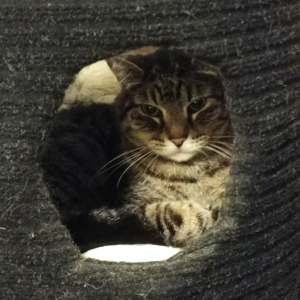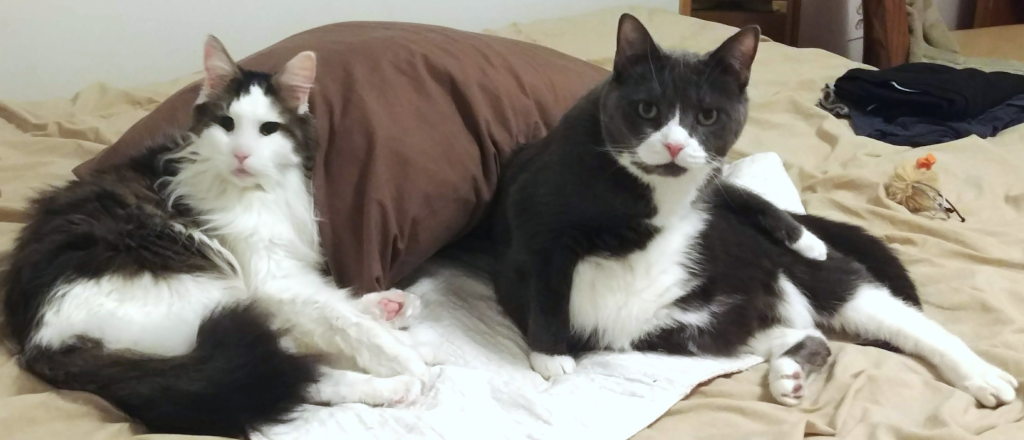Cats have long been associated with the mythical ability to survive nine lives, but the reality of feline longevity is both fascinating and complex. While most domestic cats live between 12-15 years, some exceptional felines defy these averages, reaching their 20s or even 30s, while others unfortunately have their lives cut short.
The Average Cat Lifespan
 The typical house cat lives approximately 13-14 years, though this number has increased significantly over recent decades due to advances in veterinary care and nutrition. Indoor cats generally outlive their outdoor counterparts by a substantial margin – often 3-5 years longer – as they face fewer dangers such as traffic accidents, predators, diseases transmitted by other animals, and extreme weather conditions.
The typical house cat lives approximately 13-14 years, though this number has increased significantly over recent decades due to advances in veterinary care and nutrition. Indoor cats generally outlive their outdoor counterparts by a substantial margin – often 3-5 years longer – as they face fewer dangers such as traffic accidents, predators, diseases transmitted by other animals, and extreme weather conditions.
Your cat’s breed also plays a significant role in determining longevity. While mixed-breed cats (often called domestic shorthairs or longhairs) frequently enjoy the advantage of hybrid vigor, some purebred cats may be predisposed to specific health conditions that can impact their lifespan.
For instance, Siamese and Burmese cats often live into their late teens, while breeds like the Manx, Persian, and Scottish Fold may face genetic health challenges that can reduce their average lifespan.
Exceptional Longevity: The 20+ Club
The oldest documented cat was Creme Puff from Austin, Texas, who lived an extraordinary 38 years and 3 days (1967-2005). While this is undoubtedly exceptional, it’s not uncommon for well-cared-for cats to reach their early or even mid-20s. We’ve had several cats ourselves that lived to 20 years or older. We take exceptionally good care of our cats and tend to their needs and special needs attentively, so there longevity is not a surprise to us.
 Several factors contribute to these remarkable cases of feline longevity. Genetics certainly plays a role – some cats simply inherit strong constitutions. However, environmental factors and care make an enormous difference. Cats that live exceptionally long lives typically benefit from:
Several factors contribute to these remarkable cases of feline longevity. Genetics certainly plays a role – some cats simply inherit strong constitutions. However, environmental factors and care make an enormous difference. Cats that live exceptionally long lives typically benefit from:
- Consistent, preventative veterinary care including regular check-ups
- High-quality, appropriate nutrition without overfeeding
- Maintaining a healthy weight throughout their lives
- Dental care (poor dental health can lead to systemic issues)
- Low-stress living environments
- Indoor living or controlled outdoor access
- Mental and physical stimulation
- Early intervention when health issues arise
The power of preventative care cannot be overstated. Many of the longest-lived cats have owners who monitored their health vigilantly and addressed concerns before they became serious problems.
When Life Is Shorter: Understanding Early Mortality
Sadly, some cats don’t reach double digits in age. Several health conditions can significantly reduce feline lifespan:
Feline leukemia virus (FeLV) and feline immunodeficiency virus (FIV) remain serious threats, particularly to outdoor cats. These immune-compromising diseases can dramatically shorten lifespan, with many affected cats not surviving beyond 5 years after diagnosis.
Chronic kidney disease affects roughly 30-40% of cats over 10 years old, but can develop earlier. Our cat “Pebbles” comes to mind and she passed at 14 years. Without management, this progressive condition can substantially reduce lifespan. Early detection through regular veterinary visits can help slow progression through dietary management and supportive care.
Heart disease, particularly hypertrophic cardiomyopathy (HCM), disproportionately impacts certain breeds like Maine Coons and Ragdolls but can affect any cat. When severe, it can cause sudden death or lead to heart failure, significantly shortening lifespan. We believe we lost “Skittles” to this. He had a few cardiac events before then having a final one at 15 years.
 Cancer becomes increasingly common as cats age, with lymphoma being particularly prevalent. Early detection can make a significant difference in treatment options and outcomes. We’ve only had one cat that developed cancer, “Zippy“, who suffered with Squamous cell carcinoma. This is a type of cancer that develops in the squamous cells of the epidermis. Zippy lived for 16 years.
Cancer becomes increasingly common as cats age, with lymphoma being particularly prevalent. Early detection can make a significant difference in treatment options and outcomes. We’ve only had one cat that developed cancer, “Zippy“, who suffered with Squamous cell carcinoma. This is a type of cancer that develops in the squamous cells of the epidermis. Zippy lived for 16 years.
Obesity might not seem immediately life-threatening but carries serious consequences. Overweight cats face higher risks of diabetes, arthritis, heart disease, and other conditions that can reduce both quality of life and longevity.
Our cat Brackers was overweight his entire life until his final years. “Brackers” lived for 20 years so we attribute his extreme age with great care. He was overweight for about 95% of that time and was always a big cat.
When Is a Cat “Senior”?
Most veterinarians consider cats to enter their senior years around age 11, though larger breeds may be considered seniors slightly earlier. By age 15, cats enter what many veterinarians call the “geriatric” phase. We have a Cat Age Calculator to help determine if your cat is a senior and what that cat age means in human years.
This transition into senior status should trigger some changes in preventative care. Many veterinarians recommend twice-yearly check-ups for senior cats, with more comprehensive bloodwork to catch developing issues early. Subtle changes like slight weight loss, increased thirst, or reduced activity might signal important health changes that, if addressed promptly, could extend a cat’s comfortable life.
Senior cats commonly develop arthritis, dental disease, kidney issues, thyroid problems, and cognitive changes. Owners should watch for signs like difficulty jumping, changes in litter box habits, increased vocalization (like “Bubbles“), altered sleep patterns, or confusion.
The Takeaway
While we can’t promise our feline companions nine lives, understanding the factors that influence longevity can help us provide the best possible care. A combination of good genetics, preventative healthcare, appropriate nutrition, and a safe, enriching environment gives cats the best chance at a long, healthy life.
The exceptional cases of cats living well into their 20s or beyond remind us that chronological age alone doesn’t determine vitality. With advances in feline healthcare continuing to develop, today’s kittens may well enjoy even longer average lifespans than previous generations. And regardless of whether our cats live 10 years or 20, making those years healthy and happy remains the most important goal for any cat owner.



